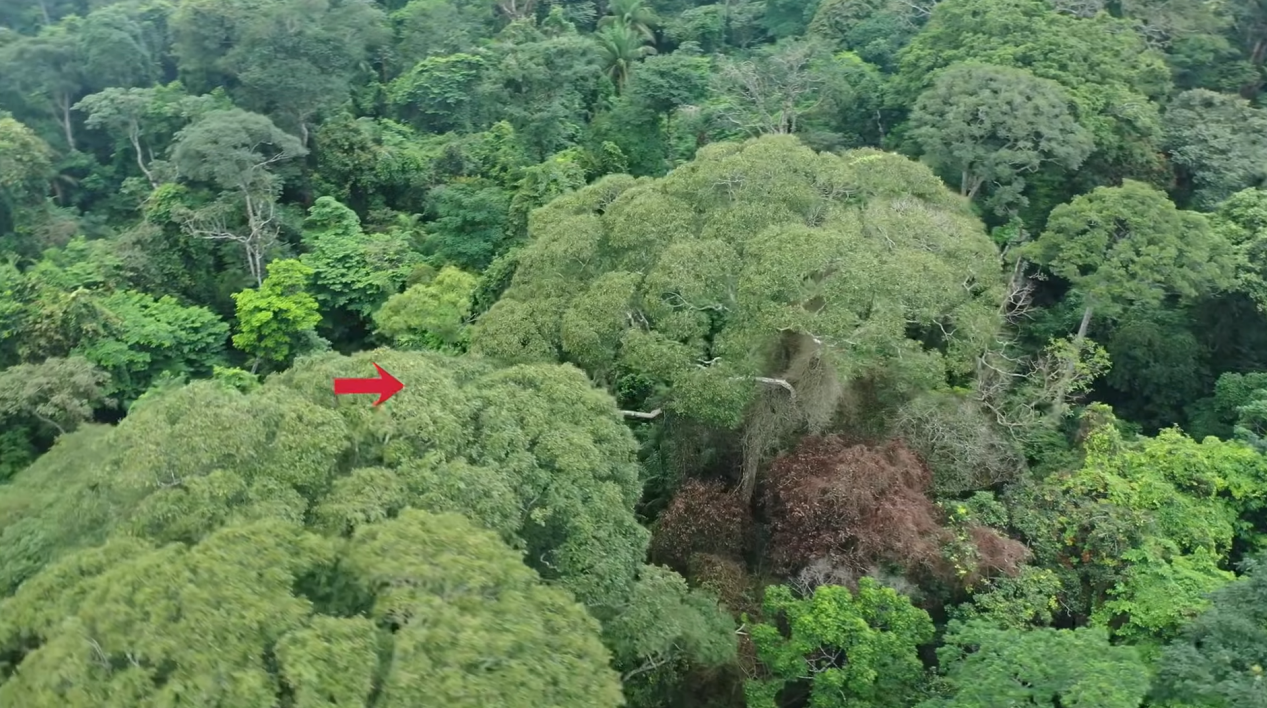
For centuries, scientists believed lightning only brought destruction to trees. While some trees struck by lightning might survive with severe damage, most were destroyed or killed. But recent discoveries in tropical forests have overturned this assumption, revealing a tree species that not only survives lightning strikes but strategically uses them to dominate its environment.
The breakthrough came in 2015 when ecologist Evan Gora observed a Dipteryx tree in Panama’s jungles. Though struck by lightning, the tree showed very little damage, while surrounding plants—including parasitic vines (寄生藤蔓) and neighboring trees—were obliterated. The vines had been blasted out of the tree’s large crown almost completely, while all the trees around it had died. This sparked a hypothesis: What if this tree actually benefited from lightning?
To test this theory, Gora’s team tracked 93 lightning-struck trees in Panama’s Barro Colorado Island Nature Monument over several years. The results were striking: All nine Dipteryx trees survived with little harm, whereas 64% of other species died within two years. Lightning eliminated approximately 78% of parasitic vines on Dipteryx trees and killed an average of 9.2 competing trees per strike. By redirecting electricity through their conductive branches or gaps, the lightning cleared competing plants, giving Dipteryx trees significantly greater access to sunlight and soil nutrients.
Further analysis revealed evolutionary advantages. Dipteryx trees grow over 30 meters tall—several meters higher than neighboring species—with wide, flat crowns acting as natural lightning conductors. Their structures make them 68% more likely to be struck than average trees. Over their 300-year lifespan, a Dipteryx tree may survive six or more strikes. “It’s better for them to be struck than not,” Gora concluded in a recent study.
Researchers suspect the trees’ survival may relate to superior electrical conductivity (导电性). This discovery challenges ecological assumptions, showing how certain species take advantage of natural disasters to thrive. Scientists are now investigating whether other “lightning-resistant” trees exist, potentially rewriting our understanding of forest ecosystems.
原创编写 版权所有 侵权必究! 每日更新 个性化阅读 英语飙升!
1.1. What was scientists’ long-held belief about lightning’s effect on trees?
A Lightning could help trees grow stronger.
B Lightning only caused minor damage to trees.
C Lightning brought nothing but destruction to trees.
D Lightning had no impact on the survival of trees.
解析:选C。细节理解题。从第一段首句“For centuries, scientists believed lightning only brought destruction to trees.”可知,数百年来,科学家认为雷电只会给树木带来毁灭。尽管少数遭雷击中的树木可能在严重受损后存活,但大多数会被摧毁或致死。故选C。
2.2. What does the underlined word “obliterated” in Paragraph 2 probably mean?
A Protected.
B Destroyed.
C Strengthened.
D Transformed.
解析:选B。词义猜测题。从第二段划线单词后面的“The vines had been blasted out of the tree’s large crown almost completely, while all the trees around it had died.”可知,这棵树被闪电击中后损伤极小,而周围的植被包括寄生藤蔓和相邻的树情况却不同,藤蔓几乎被完全从树冠中炸出,周围的树都死了,所以可以推断出“obliterated”意思是被破坏、毁灭。故选B。
3.3. What conclusion can be drawn from Gora’s study of 93 lightning-struck trees?
A Most trees die immediately after lightning strikes.
B Lightning has no significant impact on parasitic vines.
C Surviving trees lose all of their leaves completely.
D Dipteryx trees use lightning to eliminate competitors.
解析:选D。推理判断题。根据第三段可知,雷击能清除香豆树上约78%的寄生藤蔓,每次雷击平均杀死9.2棵竞争树木。闪电通过其导电树枝或间隙传导电流,清除了竞争植物,让香豆树能更好地获取阳光和土壤养分,即香豆树借闪电“清理”周边竞争者。选项A错误,研究表明64%的其他树种在两年内死亡,并非“立即死亡”;选项B与文中“雷击清除了约78%的寄生藤蔓”相悖;选项C在文中未被提及。故选D。
4.4. Why are Dipteryx trees more likely to be struck by lightning?
A Their structures increase lightning attraction.
B They have deep roots absorbing electricity.
C They grow in areas with frequent thunderstorms.
D Their leaves attract electrical charges.
解析:选A。细节理解题。从第四段“Dipteryx trees grow over 30 meters tall... with wide, flat crowns acting as natural lightning conductors”可知,香豆树高且树冠宽平,该结构使其被雷击中的概率比其他树高68%。故选A。